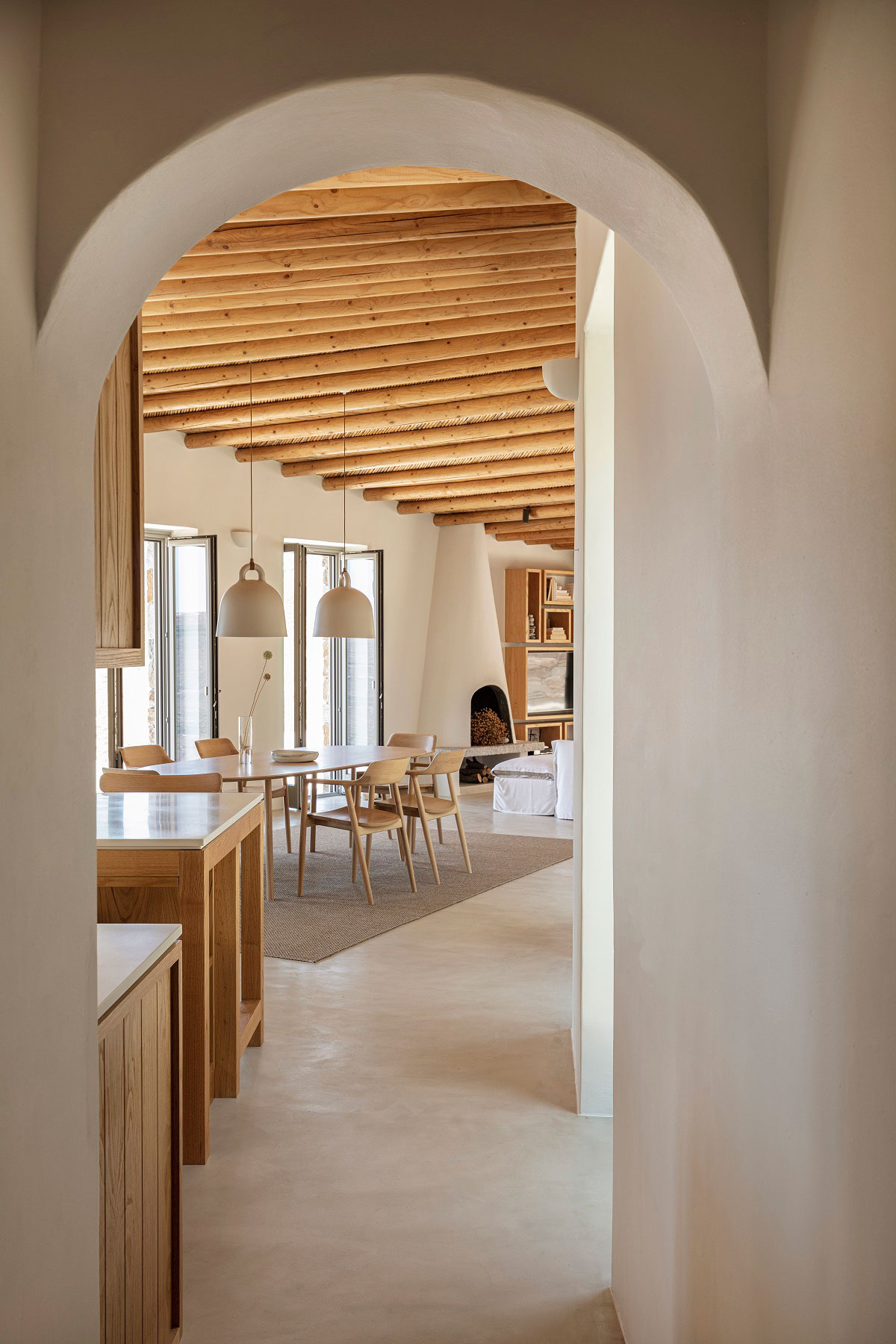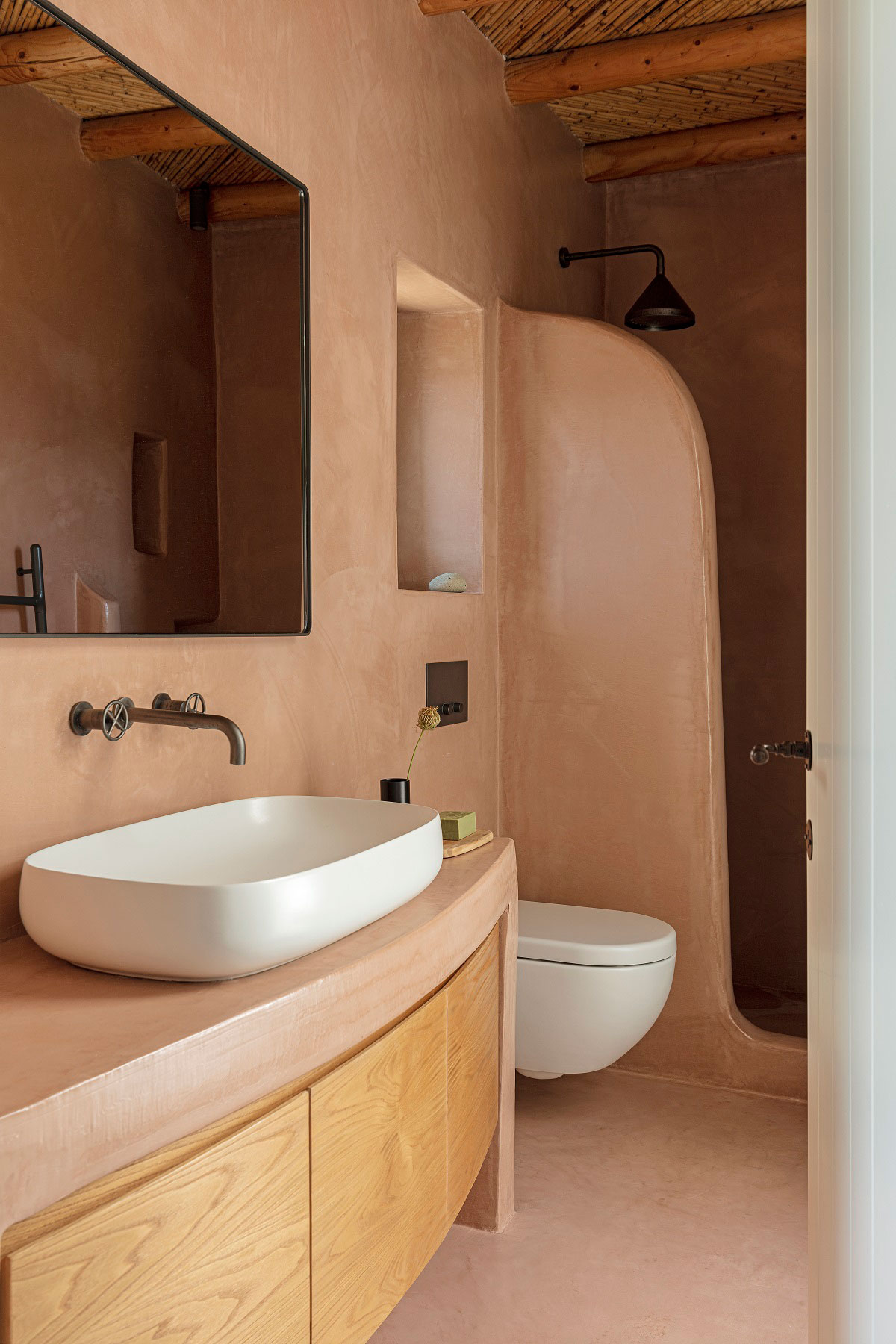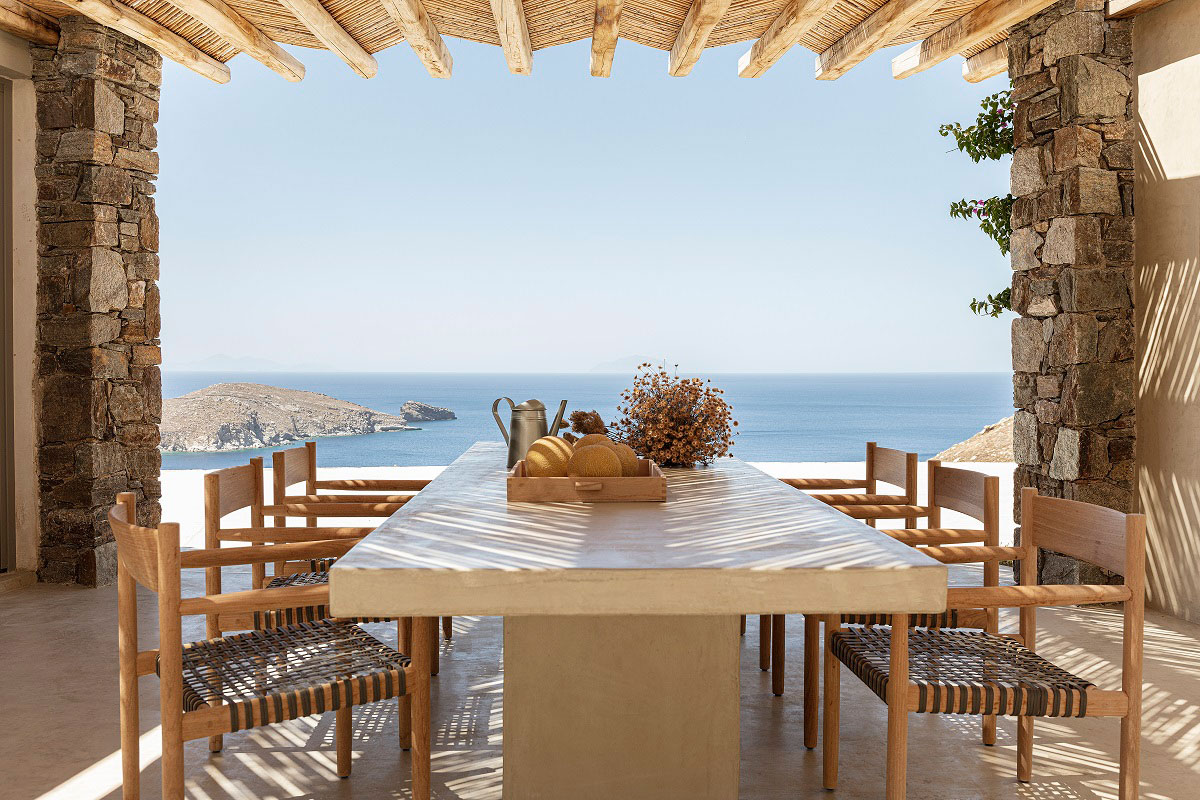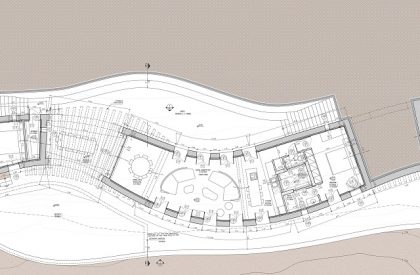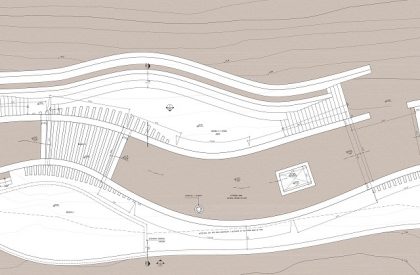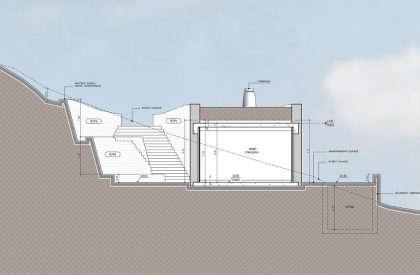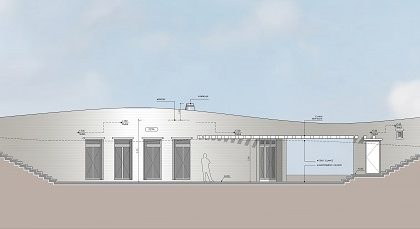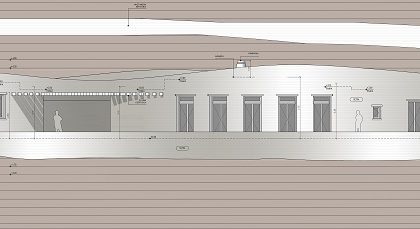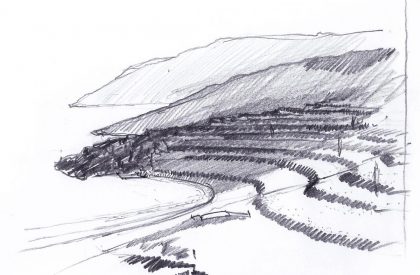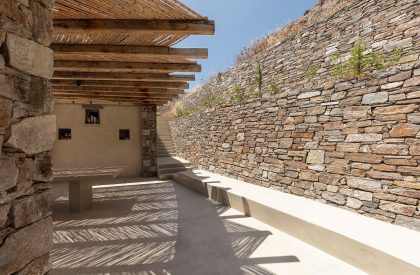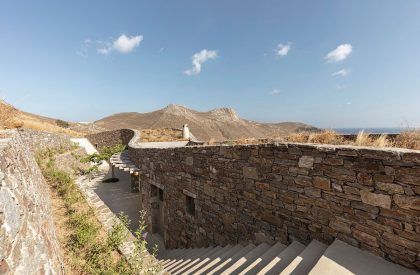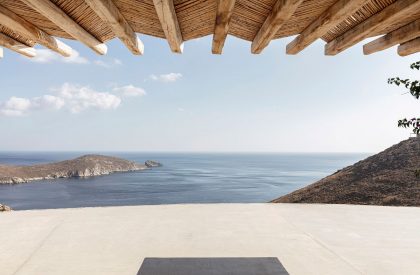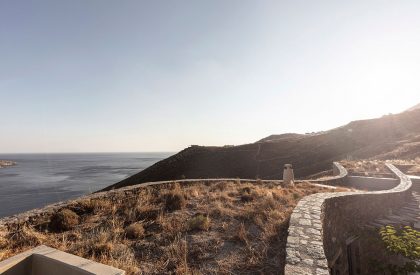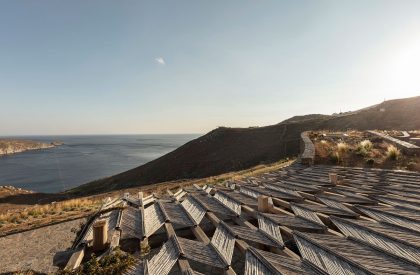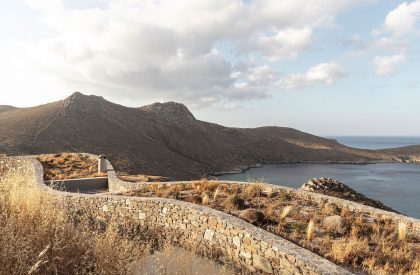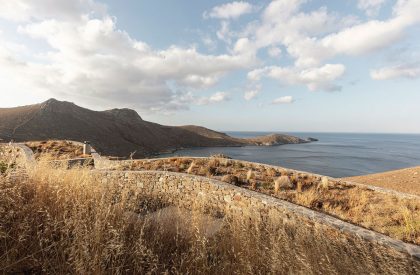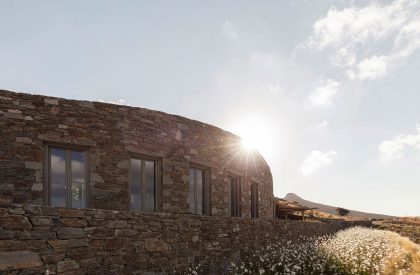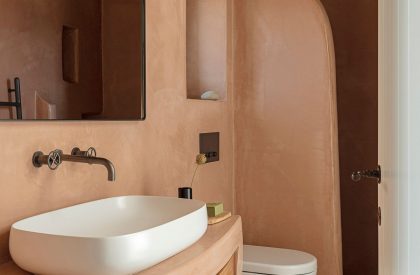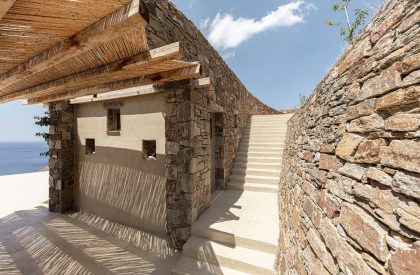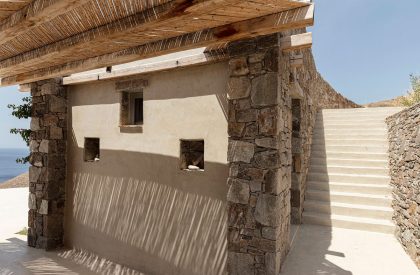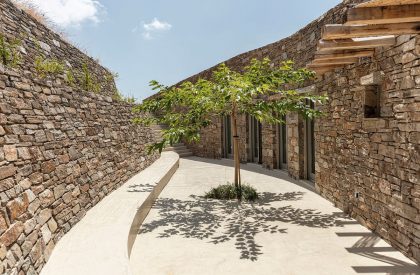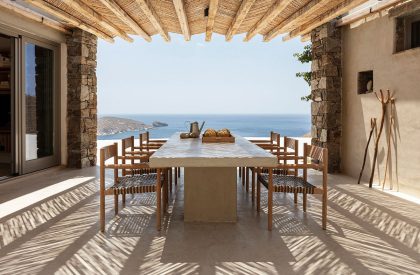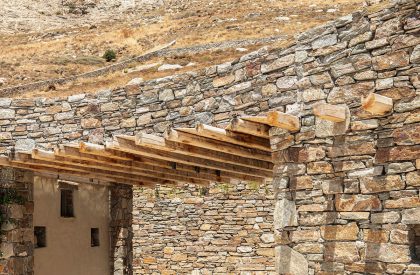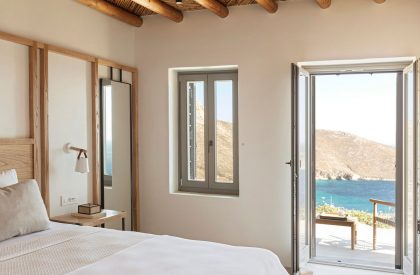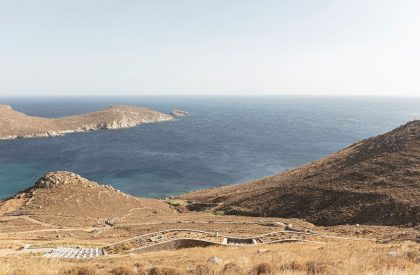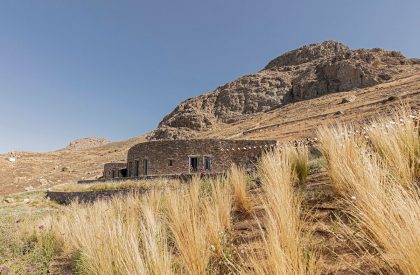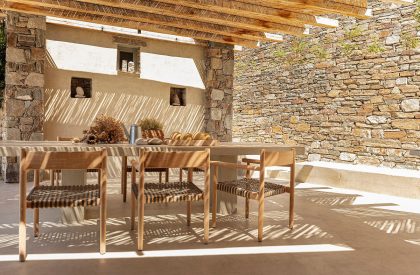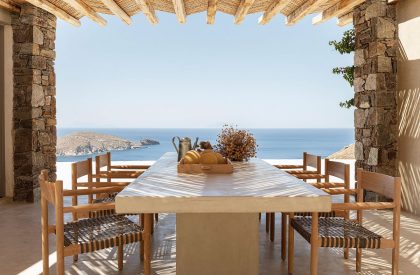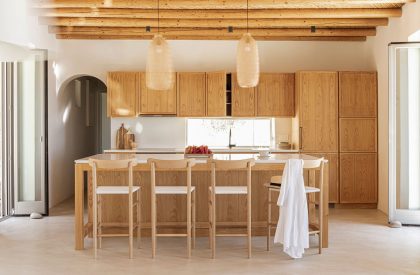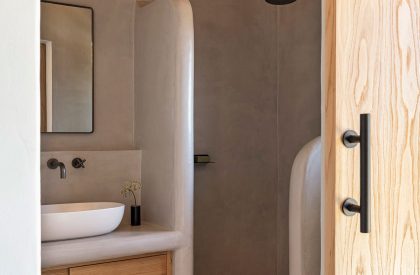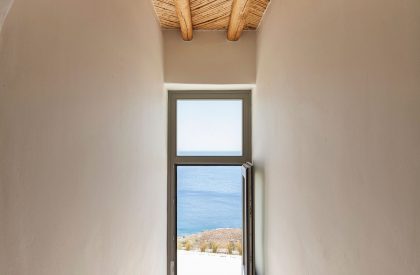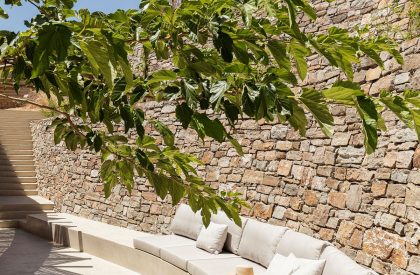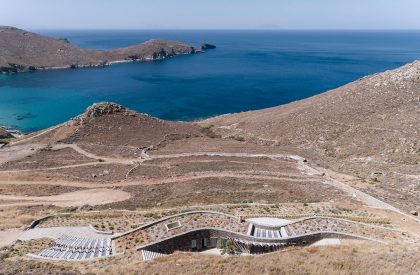Excerpt: Xerolithi, designed by Sinas Architects, focuses on creating a house that blends into its natural environment in Athens. The main goal for this project was to experiment with alternative forms, au lieu of the archetypical Cycladic Architecture model (Greek Islands) yet respecting all the basic elements that comprise its character, always taking into consideration the amazing scenery that would host this new addition. To complete the “xerolithia” likeness, the roof of the house was covered with dirt and vegetation imitating the natural landscape.
Project Description
[Text as submitted by architect] The main focus of the design was to create a house that blends in its natural environment. An environment comprised of steep dirt and gravel slopes, dressed with scattered wild thorny bushes, and beautiful large rock formations. Though the most important existing elements, were the short stone retaining walls, locally called xerolithies, created a long time ago for land cultivation purposes. These walls, usually not more than a meter in height formed flat stripes of land parallel to the slope and extended along the entire surface of the hillside. The site with its xerolithies was the spark of inspiration. The main goal for this project was to experiment with alternative forms, au lieu of the archetypical Cycladic Architecture model (Greek Islands) yet respecting all the basic elements that comprise its character, always taking into consideration the amazing scenery that would host this new addition.
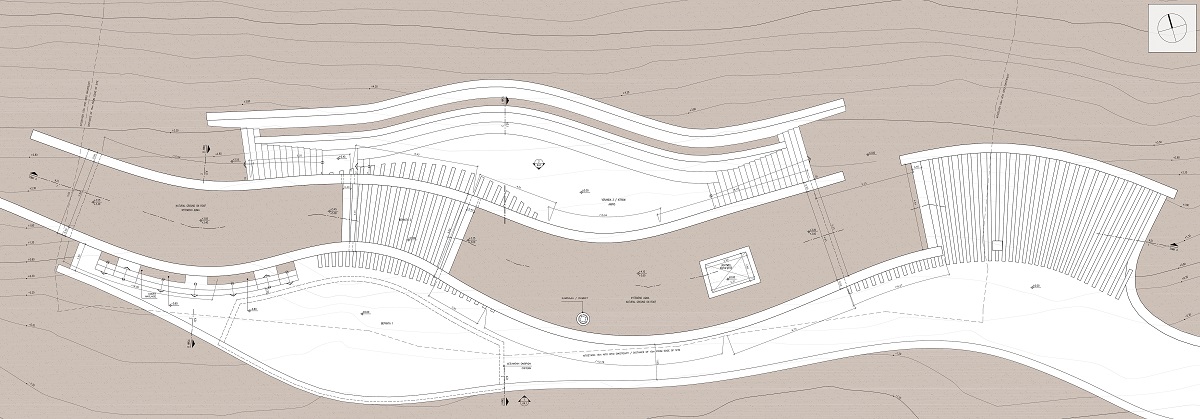
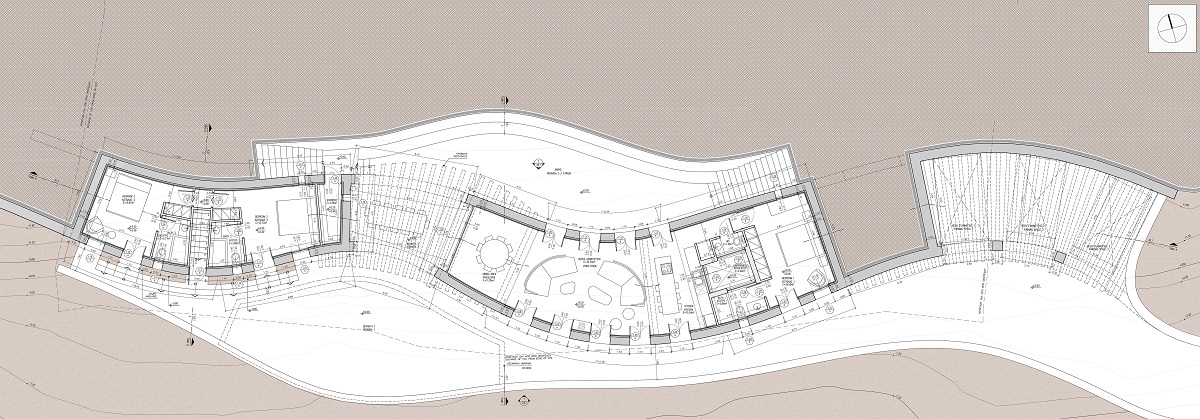
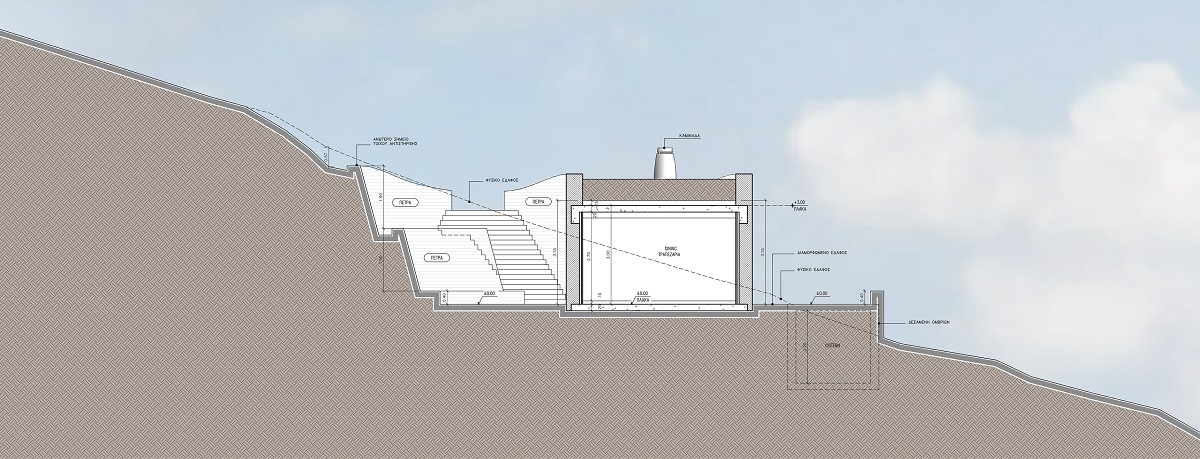


When one thinks of the Greek Islands and its vernacular architecture, scattered and stacked white boxes come to mind. The first step was to challenge this morphological preconception by imagining the main facades (front and back) of the house being formed as “xerolithies”. They start low and gradually develop a sufficient height for a house. They move gently closer and away of the slope and independently from one another, forming spaces in between them. To achieve this, all the functions of the house were placed sequentially making it long and narrow. The walls have a lightness that seem like they were affected by the strong Cycladic winds, like “ribbons in the air”. To complete the “xerolithia” likeness, the roof of the house was covered with dirt and vegetation imitating the natural landscape. This made the house almost invisible especially when seen from behind and afar.
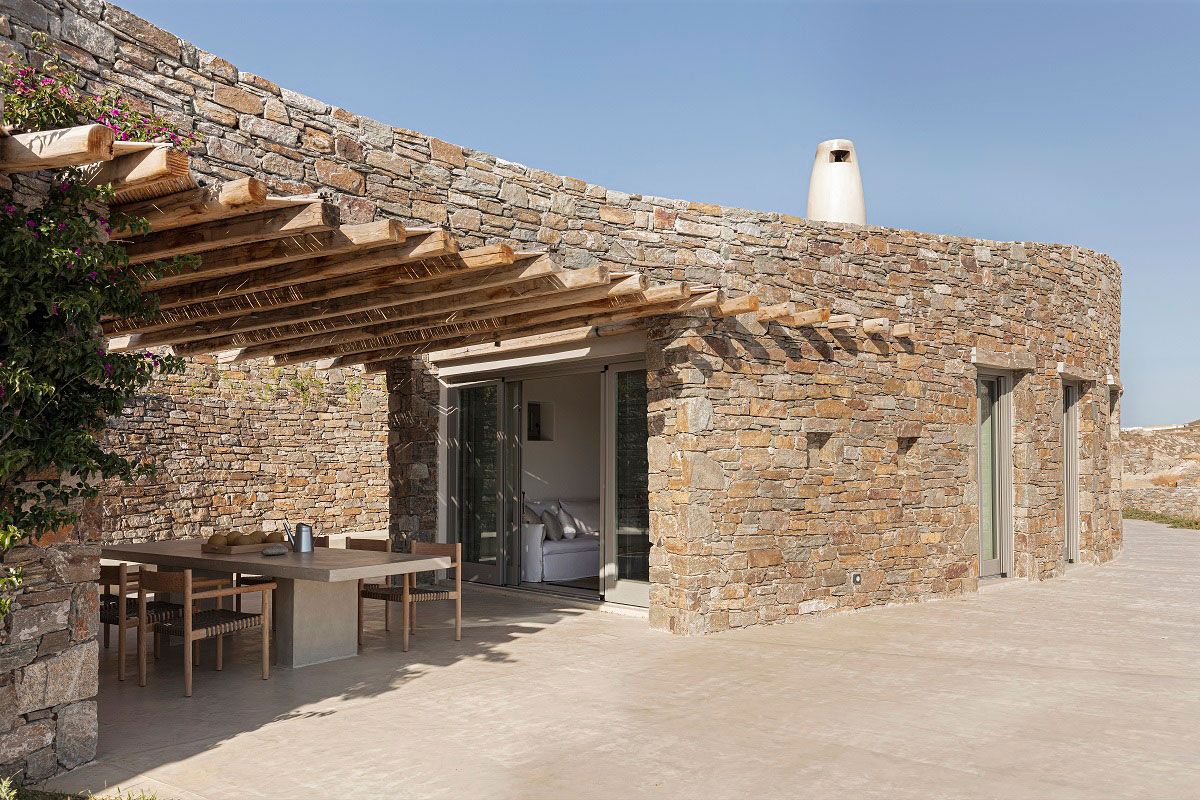

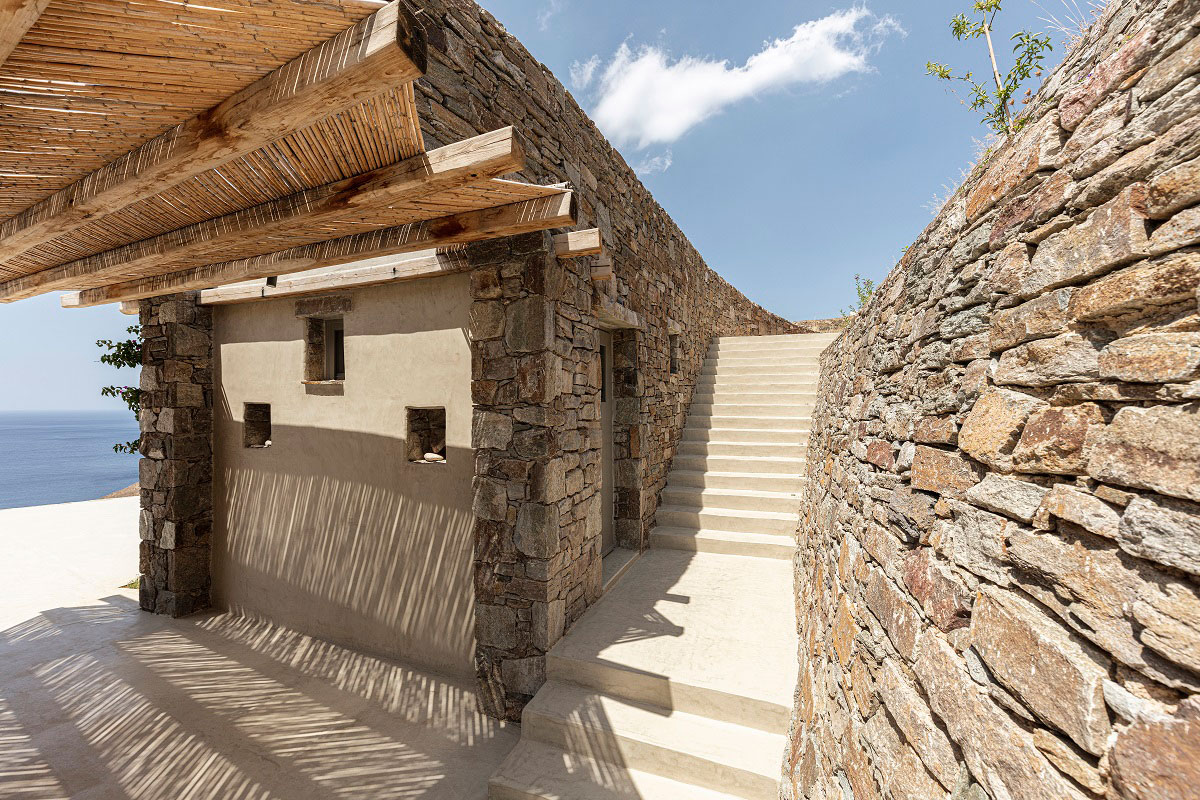
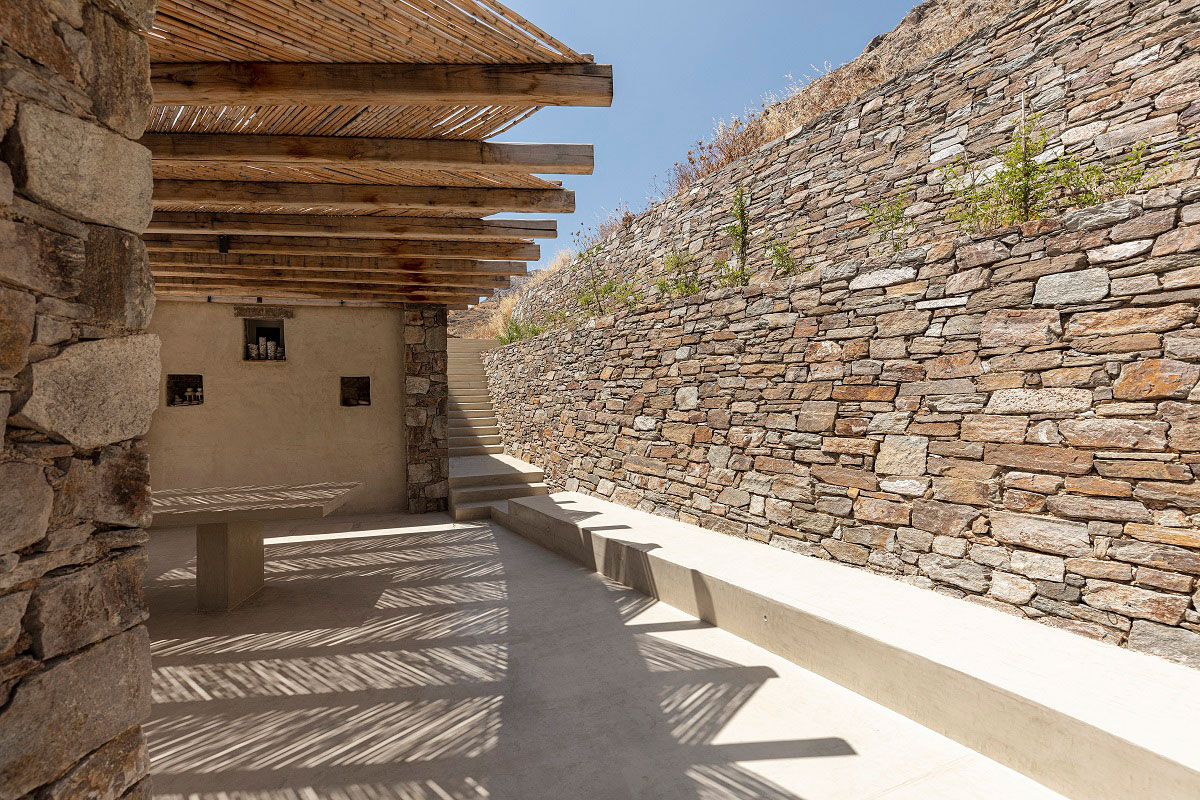
Another important feature of the Cycladic rural house are the wooden pergola, consisted of thick, raw, smooth, wooden beams and columns with a bamboo cover, all in their natural color. This structure appears also in the interior of the house, on the ceiling, following the traditional way of constructing roofs. This particular element was used along the entire length of the structure, inside and outside. The beams supporting this structure naturally could not be placed parallel to each other, instead they follow the house’s curvy morphology, like vertebrae on a long spinal cord. As a result, the bamboo was knitted in a fish bone manner creating a unique pattern with beautiful shade textures. The doors and windows are wooden and simple with a light olive color and the main exterior walls are stone with no joint mortar. Both these decisions follow the traditional style and technique.
